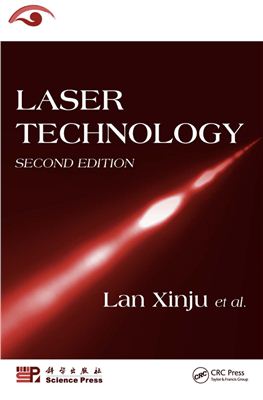Second Edition. CRC Press, 2010. 431 p. ISBN:142009081X
As different laser technologies continue to make it possible to change laser parameters and improve beam quality and performance, a multidisciplinary theoretical knowledge and grasp of cutting-edge technological developments also become increasingly important. The revised and updated Laser Technology, Second Edition reviews the principles and basic physical laws of lasers needed to lea from past developments and solve the many technical problems arising in this challenging field.
The first edition of Laser Technology was classified by the Chinese National Education Committee as a "national-level key textbook. " This updated second edition logically presents the various types of laser technology currently available and discusses the transmission of information using optical waves with modulating technology. It assesses how to enhance beam energy or power through Q switching, mode-locking, and amplification, and it illustrates how mode selection and frequency stabilizing technology can improve light beam directionality or monochromaticity. The text also covers nonlinear optical techniques for obtaining new frequencies and light waves.
Features Self-Contained, Independent Chapters for Flexible Use
The author presents the fundamentals of physical effects in technical devices and implementation methods to create a clear and systematic understanding of the physical processes of different laser technologies.
Technical improvements to enhance laser performance in different applications have given rise to new physical phenomena. These have resulted in a series of new laser branches and fields of applied technologies, such as laser physics, nonlinear optics, laser spectroscopy, laser medicine, and information optoelectronic technology. This book analyzes this growth, stressing basic principles but also including key technical methods and examples where needed to properly combine practical and theoretical coverage of this distinct area.
As different laser technologies continue to make it possible to change laser parameters and improve beam quality and performance, a multidisciplinary theoretical knowledge and grasp of cutting-edge technological developments also become increasingly important. The revised and updated Laser Technology, Second Edition reviews the principles and basic physical laws of lasers needed to lea from past developments and solve the many technical problems arising in this challenging field.
The first edition of Laser Technology was classified by the Chinese National Education Committee as a "national-level key textbook. " This updated second edition logically presents the various types of laser technology currently available and discusses the transmission of information using optical waves with modulating technology. It assesses how to enhance beam energy or power through Q switching, mode-locking, and amplification, and it illustrates how mode selection and frequency stabilizing technology can improve light beam directionality or monochromaticity. The text also covers nonlinear optical techniques for obtaining new frequencies and light waves.
Features Self-Contained, Independent Chapters for Flexible Use
The author presents the fundamentals of physical effects in technical devices and implementation methods to create a clear and systematic understanding of the physical processes of different laser technologies.
Technical improvements to enhance laser performance in different applications have given rise to new physical phenomena. These have resulted in a series of new laser branches and fields of applied technologies, such as laser physics, nonlinear optics, laser spectroscopy, laser medicine, and information optoelectronic technology. This book analyzes this growth, stressing basic principles but also including key technical methods and examples where needed to properly combine practical and theoretical coverage of this distinct area.

